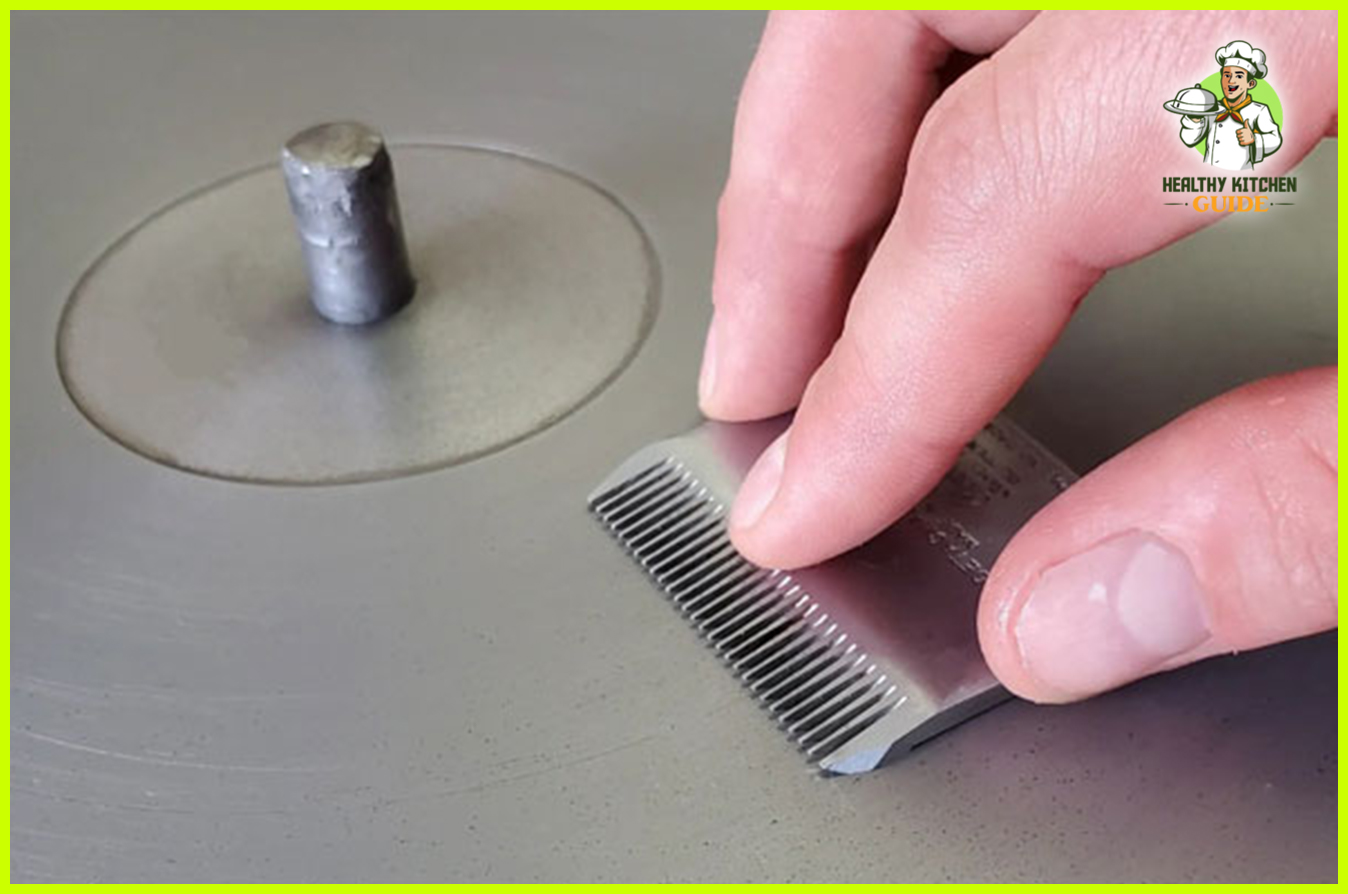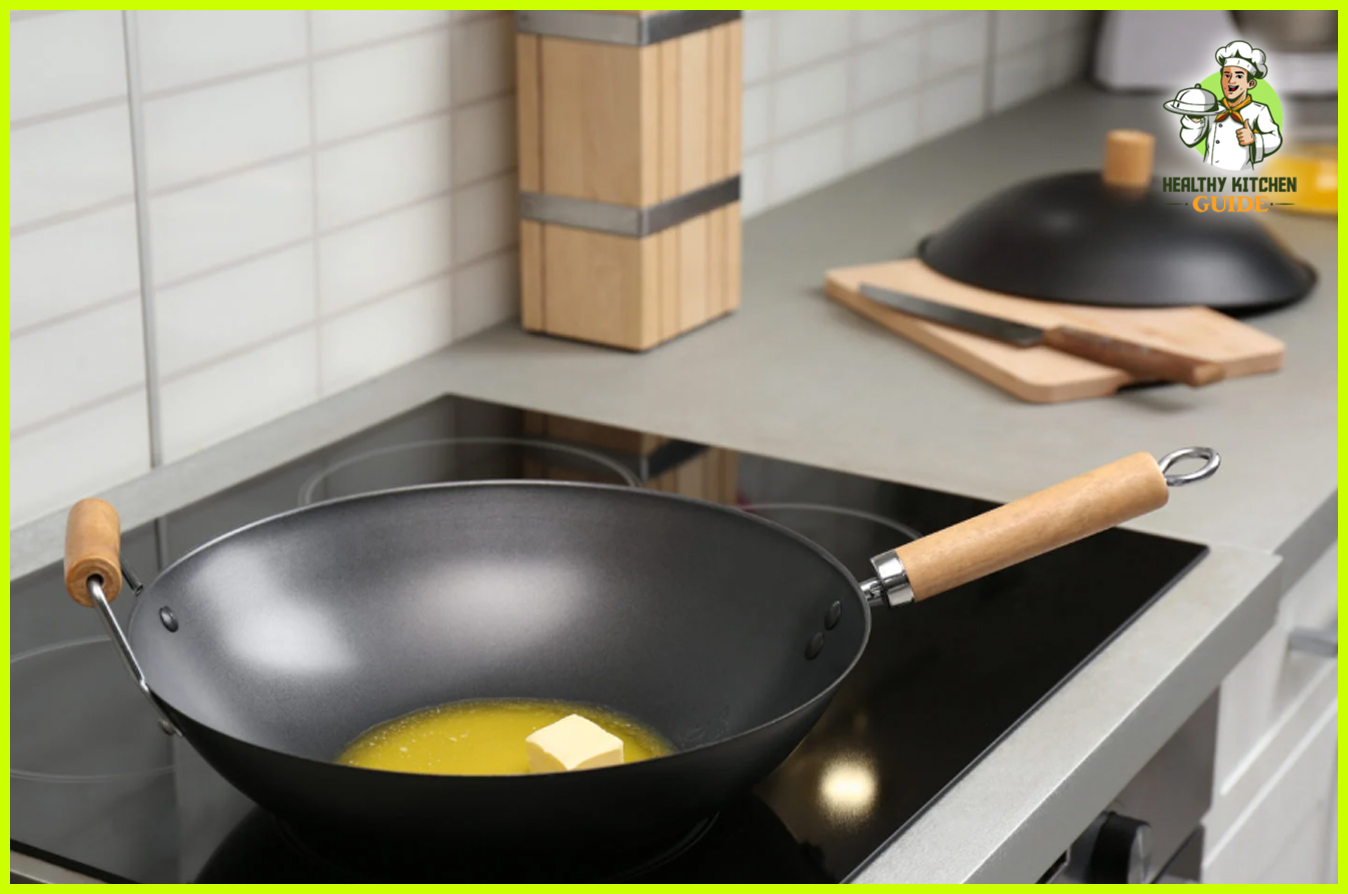To acid etch a knife, first, clean the knife thoroughly and apply an acid-resistant coating, such as nail polish, to the areas you don’t want etched. Then, submerge the knife in an acid bath for a specific amount of time, depending on desired results.
Acid etching is a popular technique used to enhance the appearance of a knife by creating unique patterns or designs on the surface. Whether you are a knife enthusiast or a professional bladesmith, learning how to acid etch a knife can add a personal touch to your blade.
This process involves using an acid solution to selectively remove metal from the blade, creating contrast and patterns. In this guide, we will walk you through the steps of acid etching a knife, ensuring that you achieve the desired results safely and effectively.
What Is Acid Etching And Why It Matters
Acid etching is a technique used to enhance the appearance and performance of knife blades. It involves applying an acid solution to the surface of the blade, which creates a controlled chemical reaction that removes a thin layer of metal. This process reveals the underlying layers, creating intricate patterns and designs. Acid etching not only adds visual appeal to a knife but also increases its corrosion resistance and durability. By selectively removing material, the etching process can improve the blade’s overall performance. Acid etching allows knife makers to showcase the hidden beauty of their creations, highlighting the unique patterns and textures that are often concealed beneath the surface. Whether for aesthetics or functional purposes, acid etching plays a vital role in the knife-making process.
Tools And Materials For Acid Etching
- Gloves and protective eyewear
- Plastic or glass container
- Acid-resistant brush
- Disposable mixing container
- Stainless steel knife or blade
- Acid-resistant work surface
- Water source for rinsing
| Acid Type | Characteristics |
|---|---|
| Ferric chloride | Suitable for stainless steel and carbon steel knives |
| Nitric acid | Effective for stainless steel knives |
| Hydrochloric acid | Works well for carbon steel blades |
- Wear protective gloves and eyewear to avoid direct contact with acids.
- Work in a well-ventilated area or use a fume hood to prevent inhalation of acid fumes.
- Handle acids carefully and pour them slowly to prevent splashing.
- Dispose of acid waste properly according to local regulations.
Always prioritize safety when acid etching a knife. Use the appropriate tools and follow the recommended safety precautions to ensure a successful and safe etching process.
Step-by-step Guide To Acid Etching A Knife
To acid etch a knife blade, there are several important steps to follow:
Before starting the acid etching process, it is crucial to thoroughly clean the knife blade. Remove any oils, dirt, or debris using a degreasing agent or isopropyl alcohol. Ensure all surfaces are completely dry before proceeding.
Carefully apply the acid etching solution to the cleaned knife blade, using a brush or cotton swab. The acid solution should be applied evenly, ensuring all desired areas are covered. Exercise caution and follow safety guidelines when working with acid.
The intensity and time of the etching process can be controlled by monitoring the blade’s exposure to the acid solution. Keep a close eye on the progress and periodically check the etching depth. Adjust the time as needed to achieve the desired results.
Once the desired etching is achieved, neutralize the acid solution using a baking soda or vinegar solution. Carefully rinse the knife blade with water to remove any remaining acid. Ensure all traces of the acid etching solution are completely removed.
After rinsing, consider applying a protective coating on the knife blade to prevent rust. You can also further enhance the appearance of the blade by using post-etching finishing techniques like sanding, buffing, or polishing.
Design And Pattern Ideas For Acid Etching
Acid etching is a popular technique used to add design and patterns to knives, creating a unique and personalized look. When it comes to design inspirations for acid etching, both traditional and modern patterns can be used to achieve stunning results. Traditional designs often draw inspiration from cultures and time periods, such as Celtic knots or Japanese motifs. On the other hand, modern designs can be more abstract or geometric, allowing for endless creative possibilities.
One of the benefits of acid etching is the ability to create custom designs and personalize your knife. This can be done by incorporating initials, names, or even logos into the etching. With the use of stencils or freehand techniques, you can turn a plain knife into a one-of-a-kind masterpiece.
Whether you are a knife enthusiast looking to enhance your collection or a craftsman wanting to add an artistic touch to your creations, acid etching offers a versatile and visually appealing design option. Experiment with different patterns, explore various inspirations, and let your creativity shine through the art of acid etching.
| Traditional Designs | Modern Designs |
|---|---|
| Celtic knots | Abstract patterns |
| Japanese motifs | Geometric shapes |
| Floral or nature-inspired designs | Minimalist concepts |
Troubleshooting And Tips For Successful Acid Etching
In order to achieve successful acid etching on a knife, it is important to be aware of and address potential challenges that may arise during the process. Here are some common issues that individuals may encounter and effective solutions for overcoming these obstacles:
| Challenge | Solution |
|---|---|
| Uneven etching | Ensure the knife surface is thoroughly cleaned before starting the etching process. Apply the acid evenly using a brush or sponge, and consider using a stencil or mask to create a more consistent design. |
| Over-etching | Monitor the etching progress closely and remove the acid as soon as the desired depth is reached. Rinse the knife thoroughly with water to halt the etching process. |
| Blotchy appearance | Use a weaker acid solution to reduce the intensity of the etch, or try employing a different technique such as a vinegar etch or ferric chloride etch to achieve a more uniform appearance. |
| Inconsistent design transfer | Utilize a high-quality transfer material and ensure it adheres firmly to the knife surface. Apply even pressure when transferring the design and consider using a heat source such as a heat press or hairdryer to aid in the transfer process. |
Expert tips and tricks for achieving desired results:
- Always wear protective gloves and eyewear when working with acid.
- Test the acid etching process on a sample piece of metal before attempting it on the actual knife.
- Experiment with different acids, concentrations, and techniques to find the best results for your desired effect.
- Take your time and be patient, as rushing the process can lead to mistakes.
- Practice proper ventilation to prevent inhaling harmful fumes.
Maintenance And Care For Acid Etched Knives
Regular cleaning and preservation are essential for maintaining the beauty and longevity of acid etched blades. To prevent rust and corrosion, it is important to follow a few simple steps:
- Clean the knife after each use using warm soapy water and a soft cloth or sponge. Avoid using abrasive materials or harsh chemicals that can damage the etched design.
- Dry the blade thoroughly after cleaning to prevent moisture buildup, which can lead to rust formation.
- Apply a thin layer of food-grade mineral oil or specialized knife oil to the blade to provide a protective barrier against moisture and oxidation.
- Store the knife in a dry place with controlled humidity levels. Consider using a knife block or protective sheath to prevent contact with other objects.
- Avoid exposing the knife to extreme temperatures or prolonged exposure to sunlight to prevent damage to the etched pattern.
- Regularly inspect the blade for any signs of rust or damage. If necessary, use a rust eraser or fine steel wool to gently remove any rust spots.
By following these guidelines, you can enjoy the enduring beauty of your acid etched knife for years to come.
Enhancing Your Knife Collection: Acid Etched Knives In Different Applications
Enhancing Your Knife Collection: Acid Etched Knives in Different ApplicationsAcid etching is a popular technique used to add a unique touch to knives, enhancing both their appearance and functionality. In the culinary arts, acid etched knives are gaining recognition for their aesthetic appeal and ability to create precise cuts. Chefs appreciate the visual appeal of these knives and the way they elevate the presentation of dishes. Acid etched knives are not limited to the kitchen, however. They can also be displayed as collectibles or used as decorative pieces in home decor.
Moreover, acid etched knives have the potential to be utilized in outdoor activities. Their sharpness and design make them ideal for cutting through tough materials during camping or survival situations. The acid etching process can create textured designs on the blade, offering improved grip and control. Whether you are an avid chef or an outdoor enthusiast, acid etched knives offer a unique blend of style and functionality that can enhance your knife collection.
The Art And Craft Of Acid Etching: Beyond Knives
Acid etching is not limited to just knives; it can be a versatile technique applied to various crafts and artistic endeavors. The process creates intricate and visually appealing designs on metals, making it popular in jewelry making, metalworks, and DIY projects.
By exploring the possibilities beyond knife blades, acid etching enthusiasts can unleash their creativity in exciting ways. Jewelry makers can etch elaborate patterns on metal pendants and earrings, giving their pieces a unique touch. Metalworks enthusiasts can create stunning decorative items using acid etching techniques, transforming plain metal surfaces into works of art.
Additionally, acid etching can be incorporated into DIY projects, such as etching personalized designs onto metal keychains or customizing household items. The versatility of acid etching allows artists and craftsmen to experiment with different materials and textures, bringing their visions to life.
So, if you’re looking to expand your horizons and explore the art of acid etching beyond knives, prepare to be inspired by the limitless possibilities it offers. Let your imagination soar and discover the beauty of acid etching across various crafts and projects.
Conclusion And Final Thoughts
Acid etching a knife can be a fascinating and creative process. By following the steps outlined in this guide, you can achieve impressive designs and patterns on your blade, adding a unique touch to your knife collection.
In the world of knife making, acid etching plays a crucial role in enhancing the beauty and visual appeal of the finished product. Through this process, intricate designs and patterns can be etched onto the blade, transforming a plain piece of steel into a work of art. The impact of acid etching on knife aesthetics cannot be overstated, as it adds depth, character, and uniqueness to each blade. By experimenting with different etching techniques, knife enthusiasts can unleash their creativity and create one-of-a-kind designs that truly reflect their personal style. Whether it’s a simple geometric pattern or a more intricate motif, acid etching allows for endless possibilities. As you embark on your journey to becoming a skilled knife maker, remember to embrace the artistry of acid etching and let your imagination run wild. In conclusion, acid etching is a valuable technique that adds a touch of beauty and individuality to knives. Don’t be afraid to think outside the box and try different methods to achieve the desired effect. With practice and experimentation, you can create stunning blades that are both functional and visually captivating. So, let your passion for knives and your creativity soar, as you embrace the art of acid etching.Frequently Asked Questions Of How To Acid Etch A Knife
How Long Does It Take To Acid Etch A Knife?
The time required to acid etch a knife typically depends on the desired depth of the etch pattern and can range from a few minutes to a few hours.
What Are The Safety Precautions For Acid Etching A Knife?
When acid etching a knife, it is crucial to wear protective gloves, goggles, and work in a well-ventilated area. Avoid inhaling or getting the acid on your skin to prevent harm.
What Materials Are Needed To Acid Etch A Knife?
To acid etch a knife, you’ll need an etching solution (such as ferric chloride), a container, masking tape or stencils to protect the areas you don’t want to etch, and a brush or sponge for application.
Can Acid Etching Be Used To Create Custom Designs On A Knife?
Yes, acid etching is a popular technique for creating unique and custom designs on knives. It allows for intricate patterns and personalization on the blade surface.
Is It Possible To Remove An Acid Etch From A Knife?
While it is possible to remove an acid etch from a knife, it can be challenging and may require sanding or polishing the blade’s surface to eliminate the etched pattern completely.
Are There Any Alternative Methods For Etching A Knife?
Yes, there are alternative methods for etching a knife, such as using laser engraving or electrochemical etching. Each method has its advantages, and the choice depends on personal preference and desired outcome.
Conclusion
Acid etching a knife is a fascinating process that allows you to customize and enhance the appearance of your blade. By following the step-by-step instructions mentioned in this guide, you can achieve professional results right at home. Remember to prioritize safety precautions, handle the chemicals with care, and follow the manufacturer’s guidelines.
With practice and patience, you’ll be able to create unique designs that truly make your knife stand out from the rest. So, get started on your acid etching journey and enjoy the satisfaction of a beautifully etched knife.




Leave a Reply